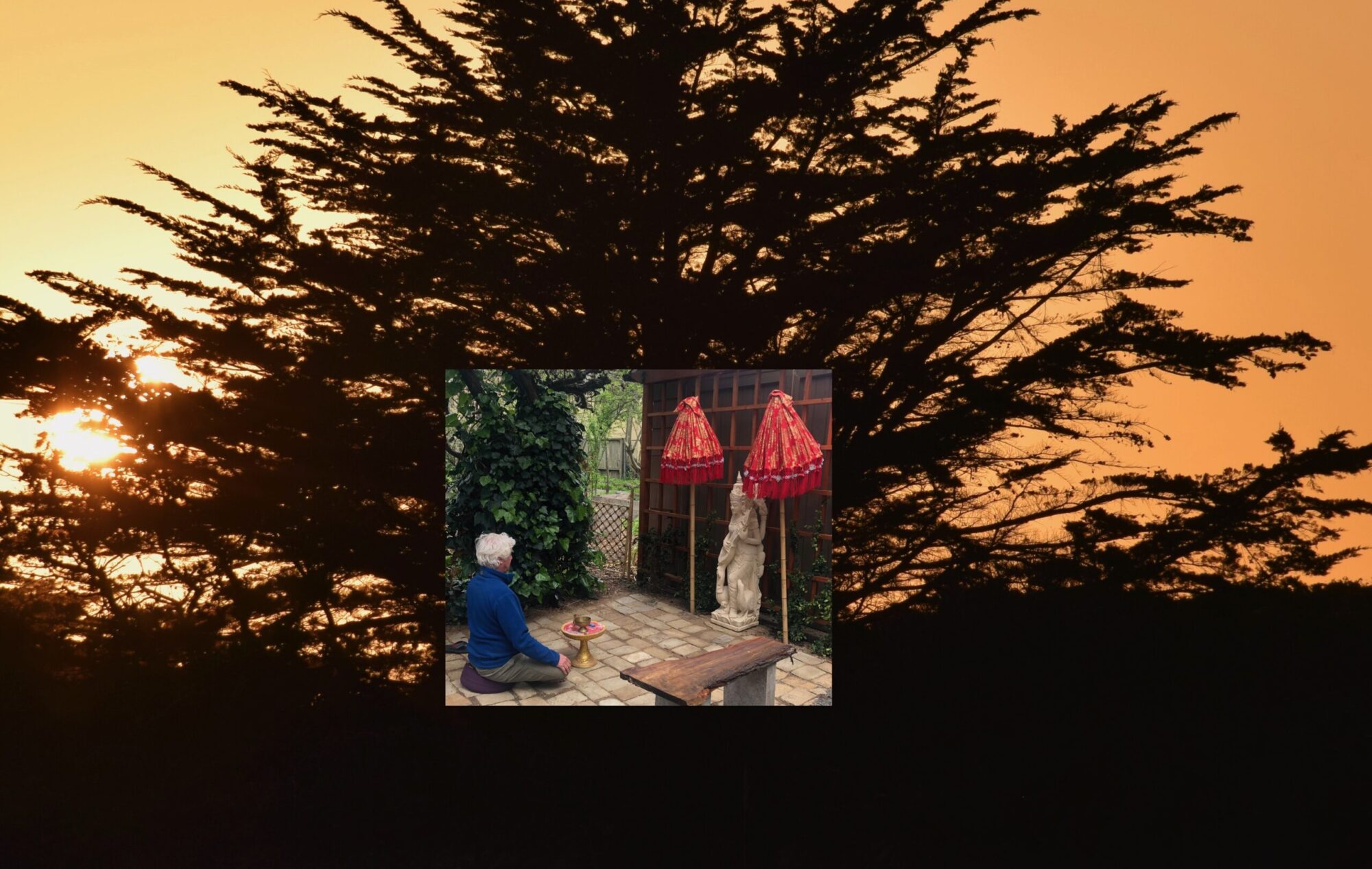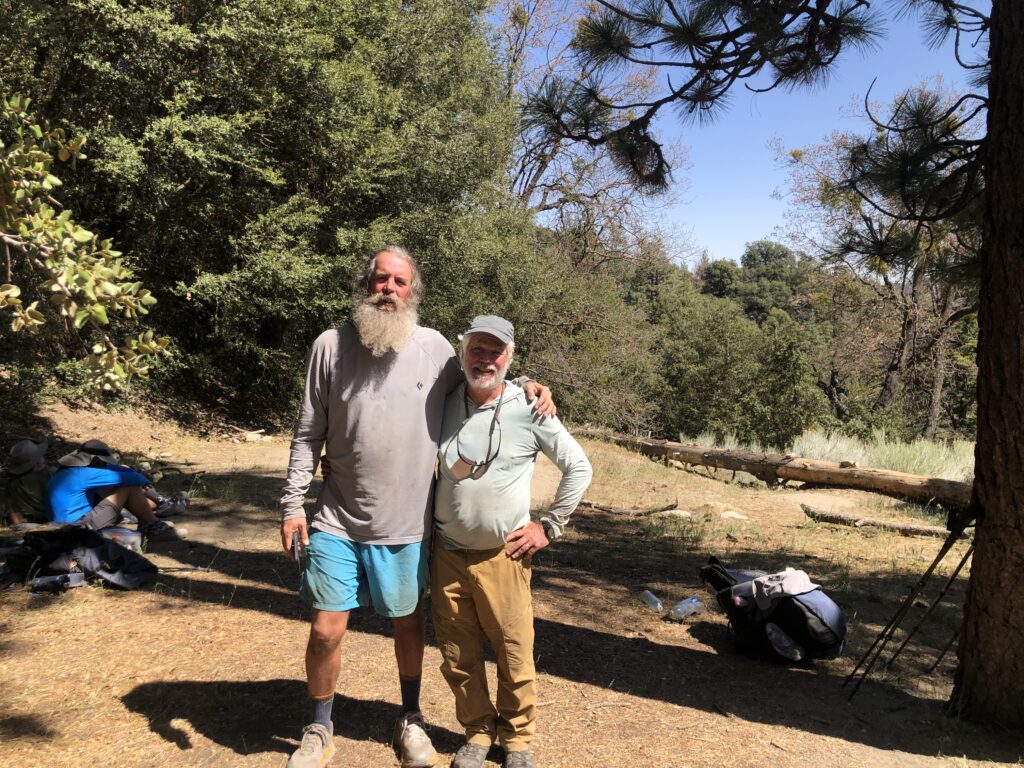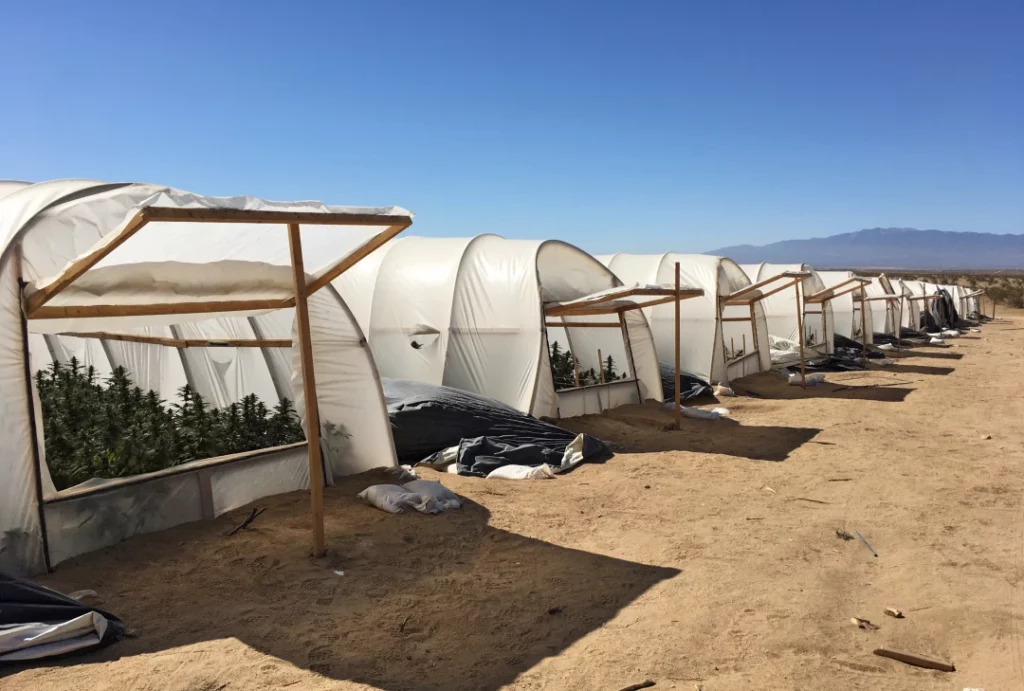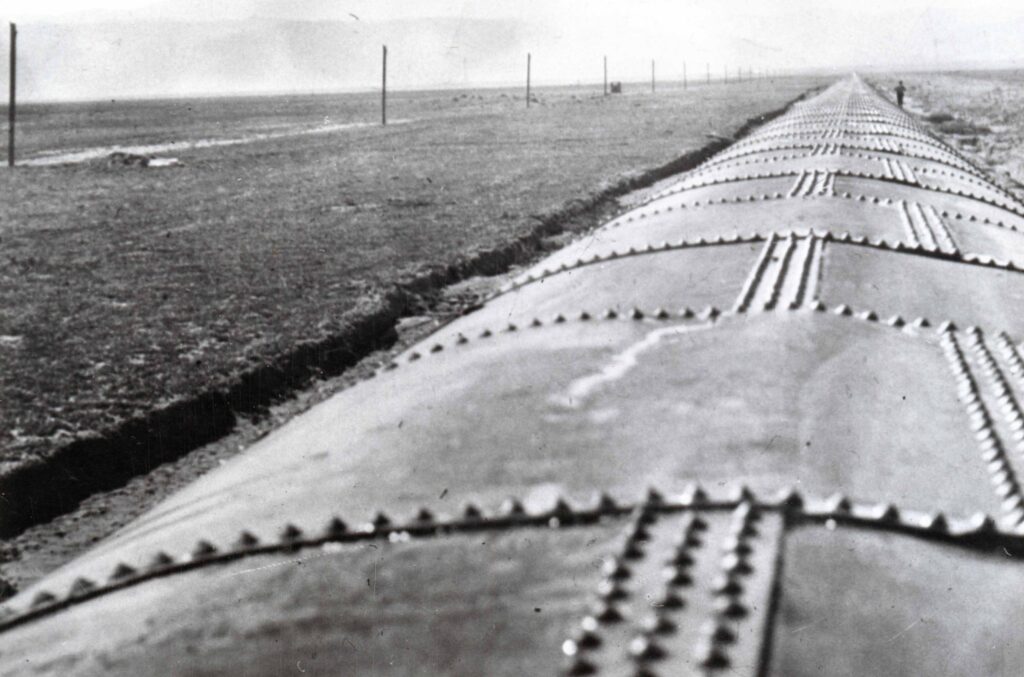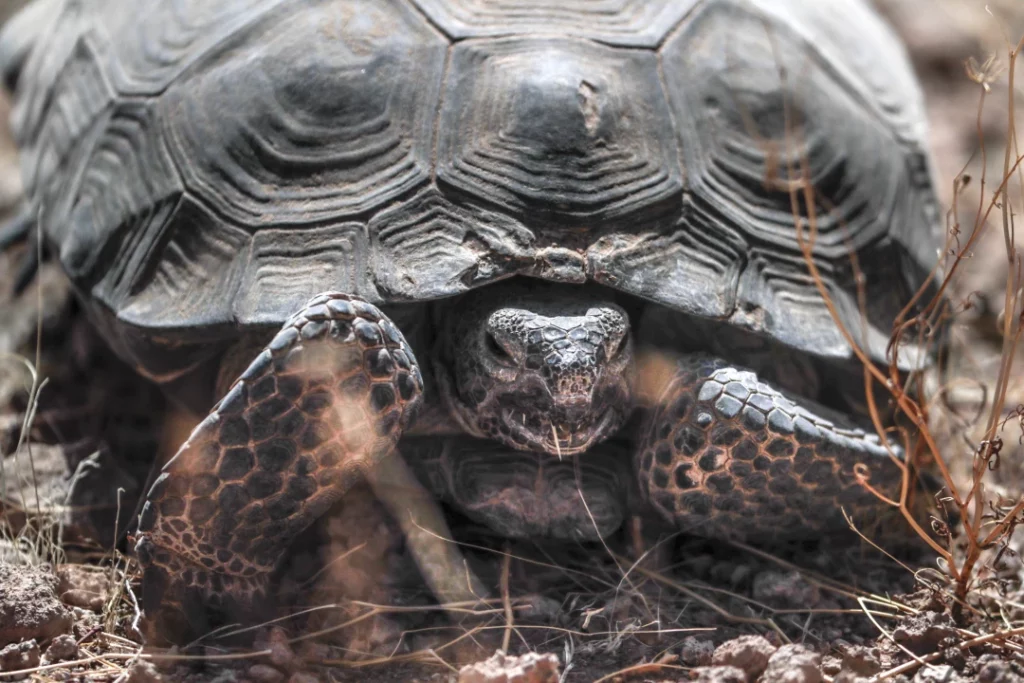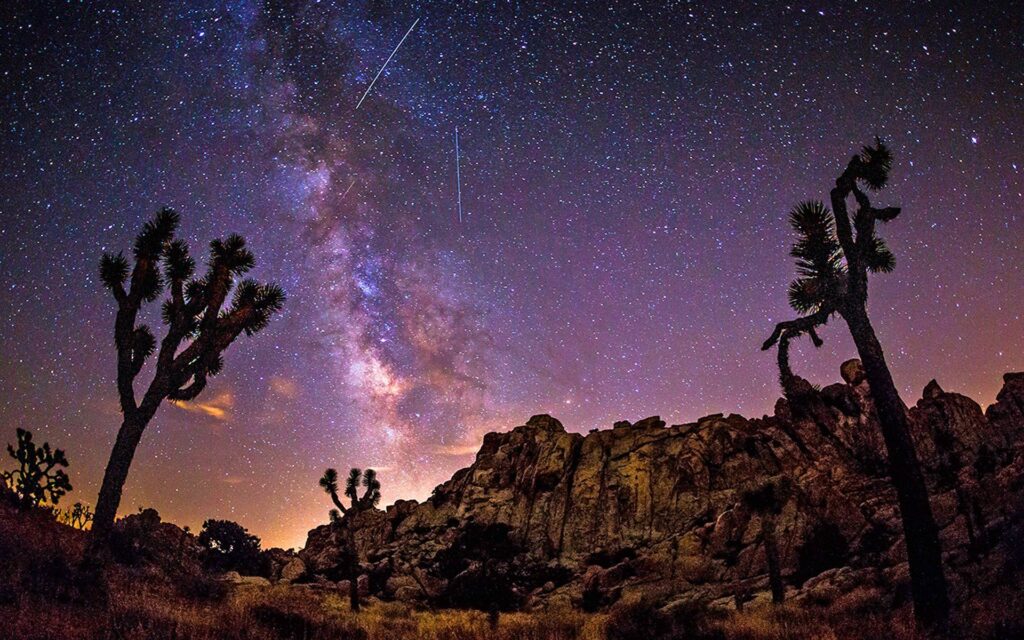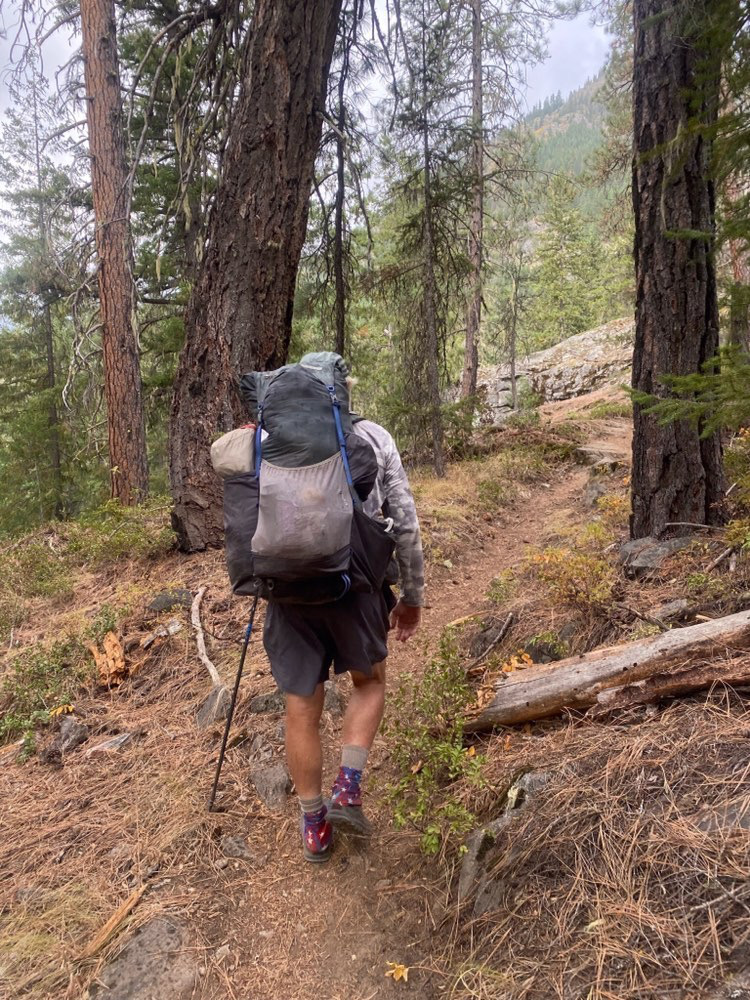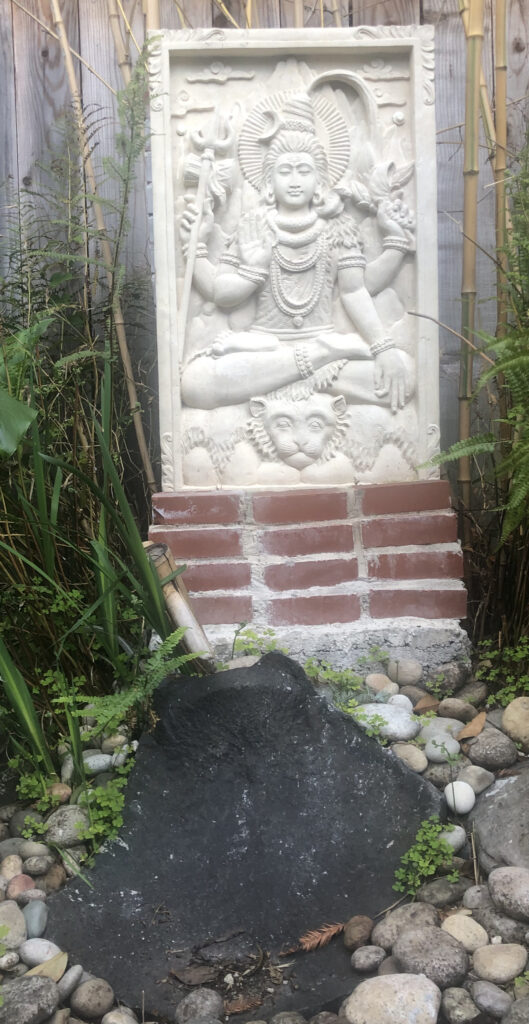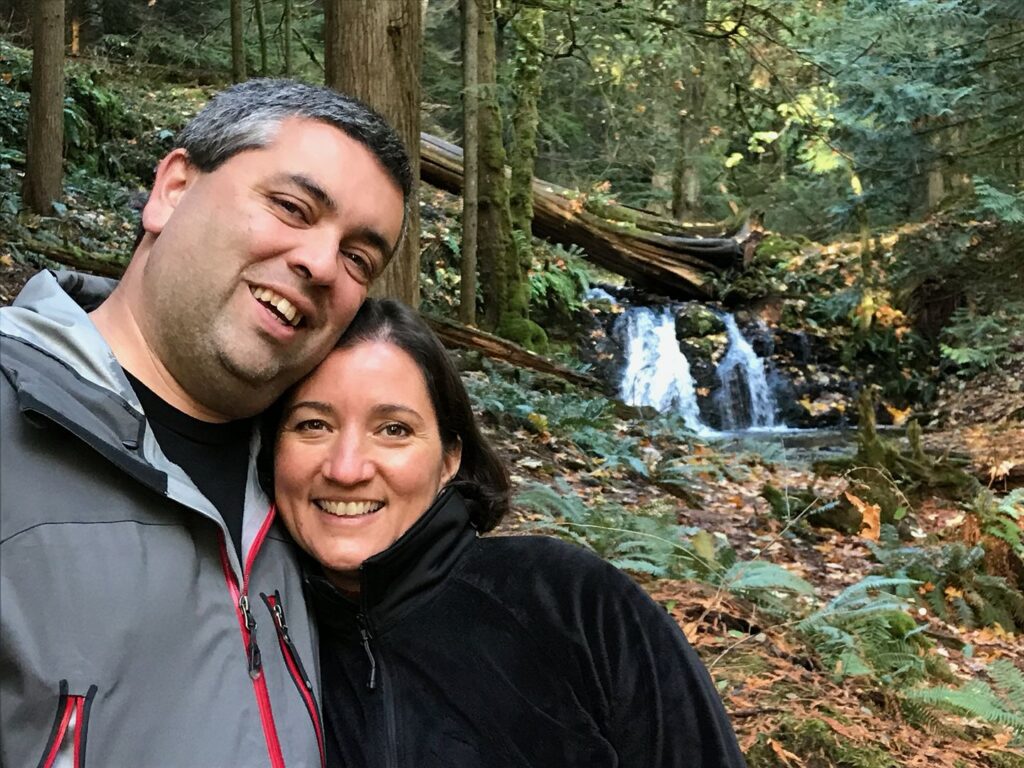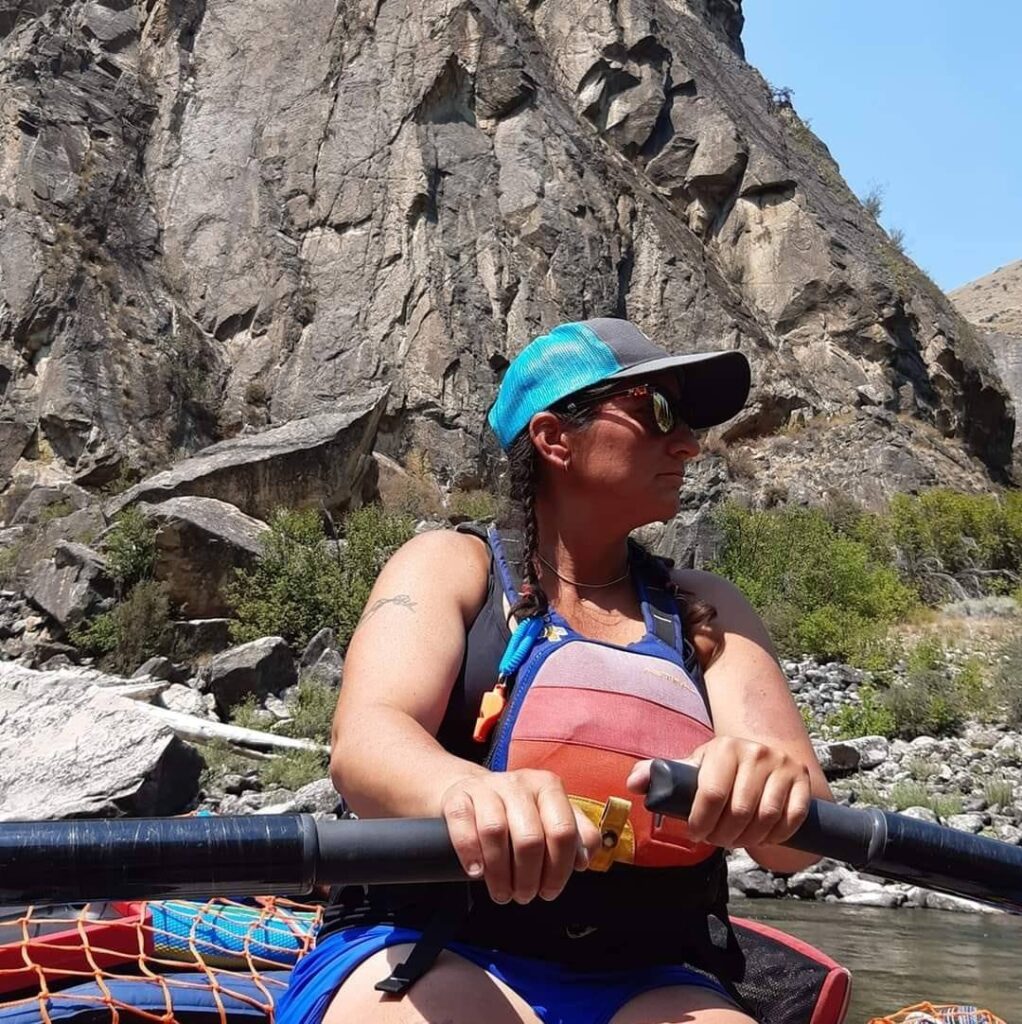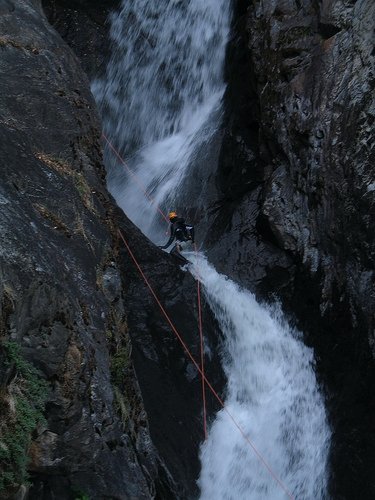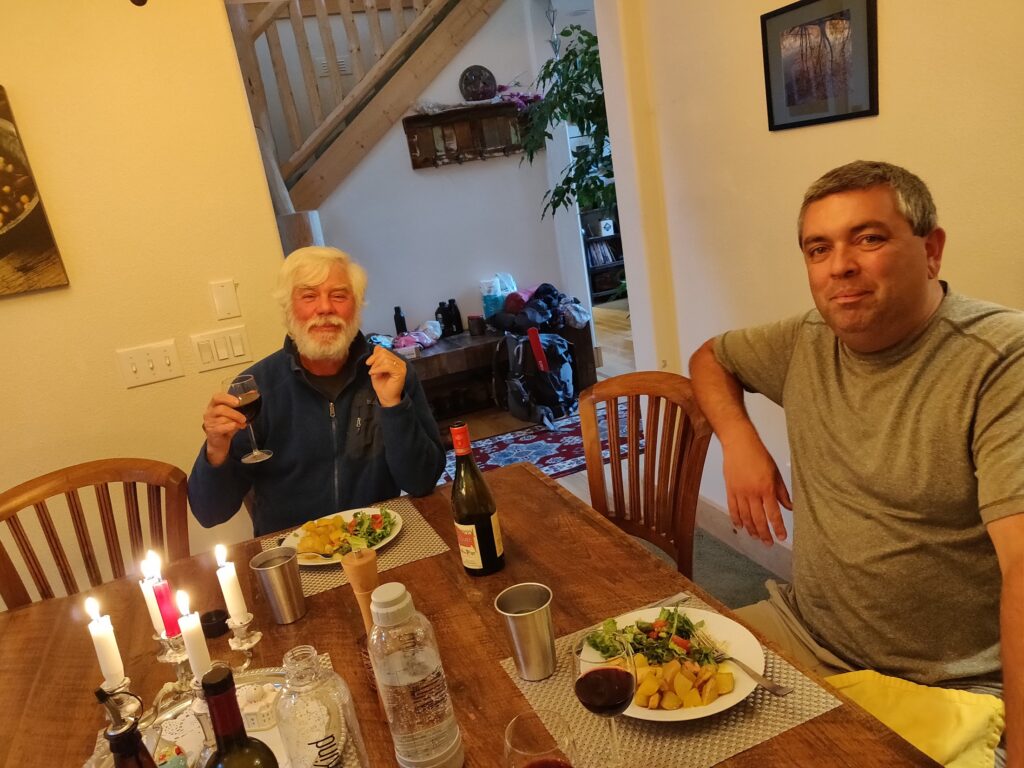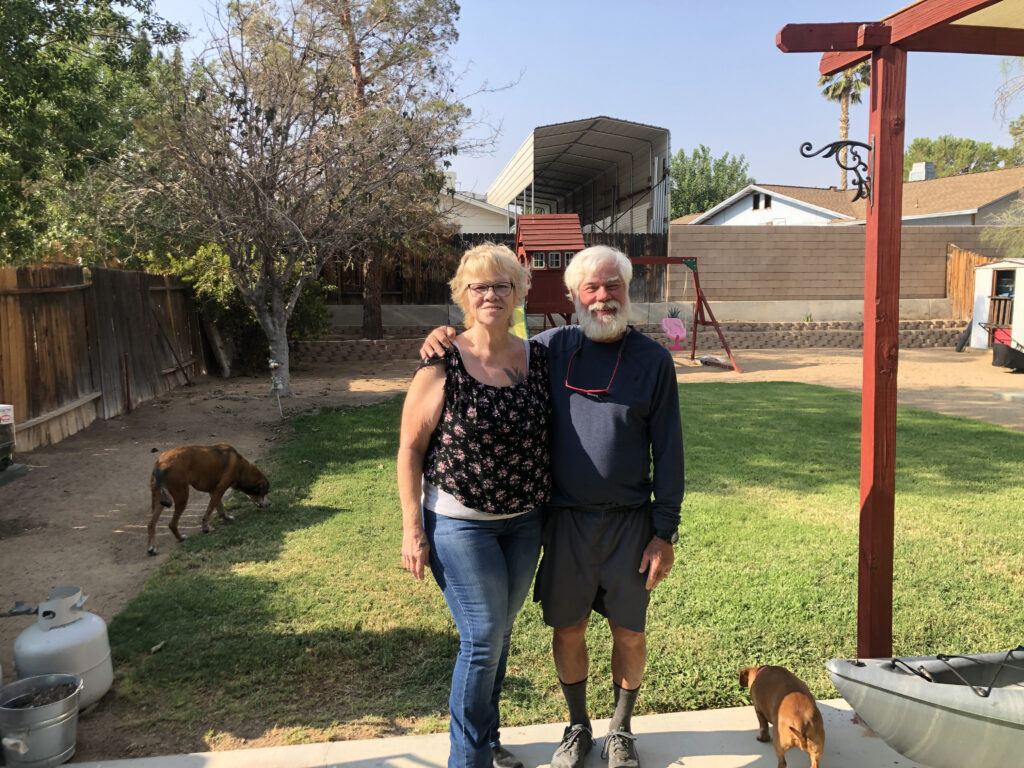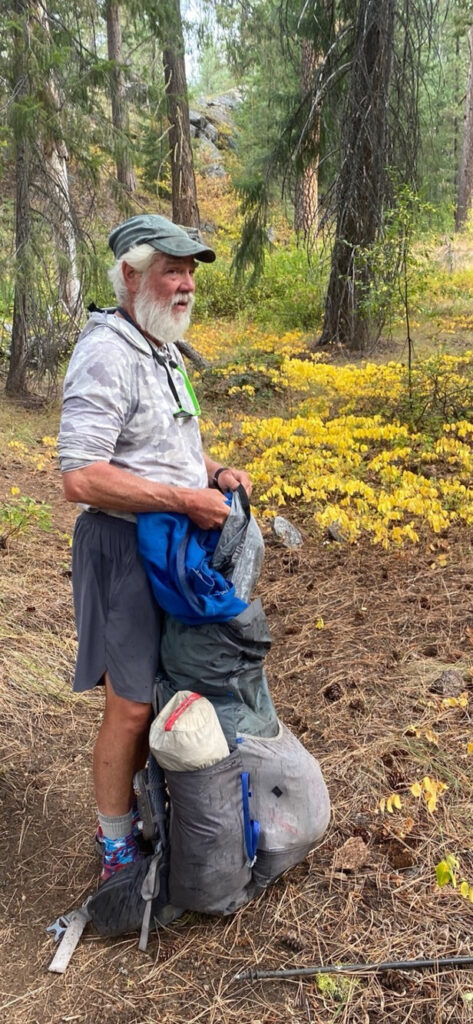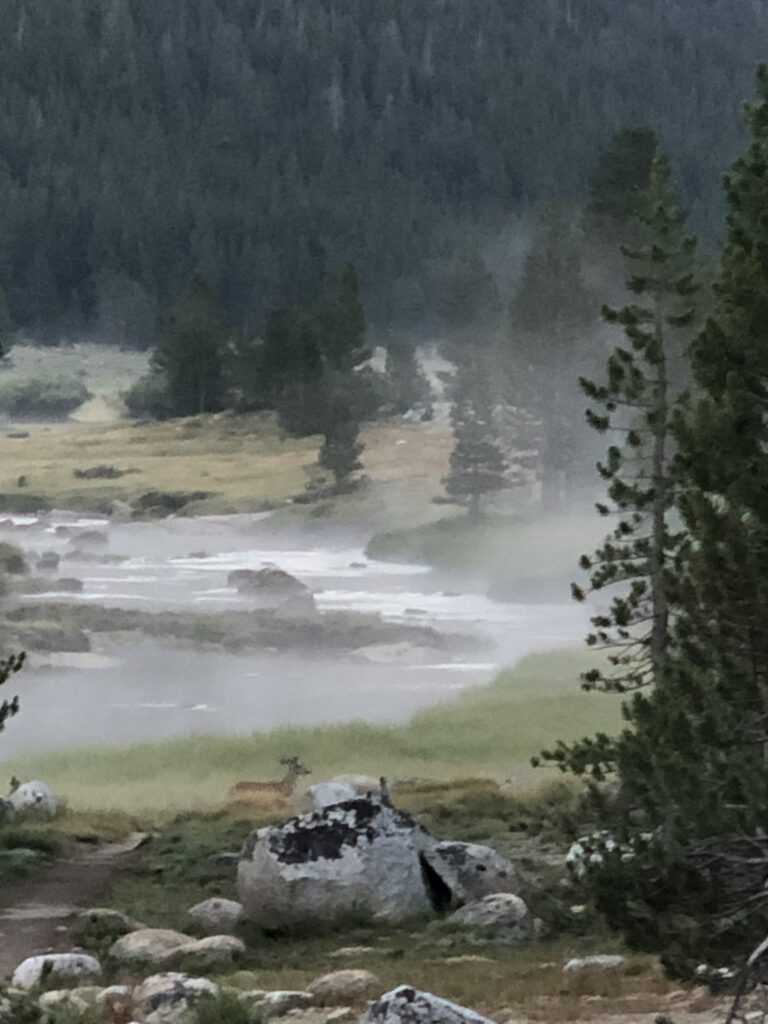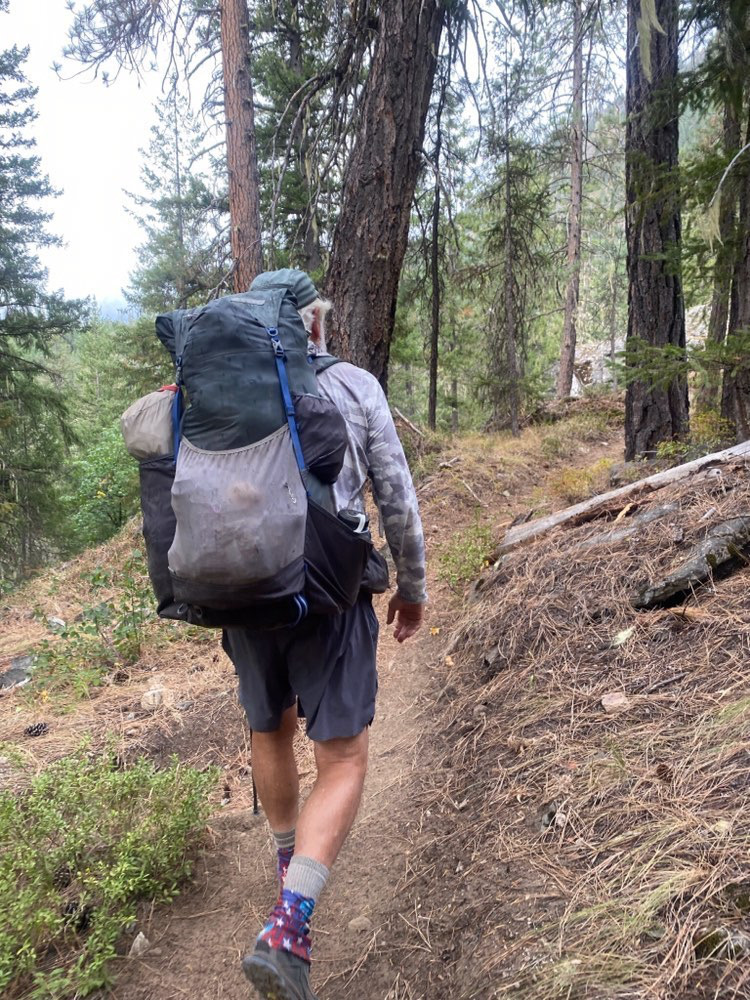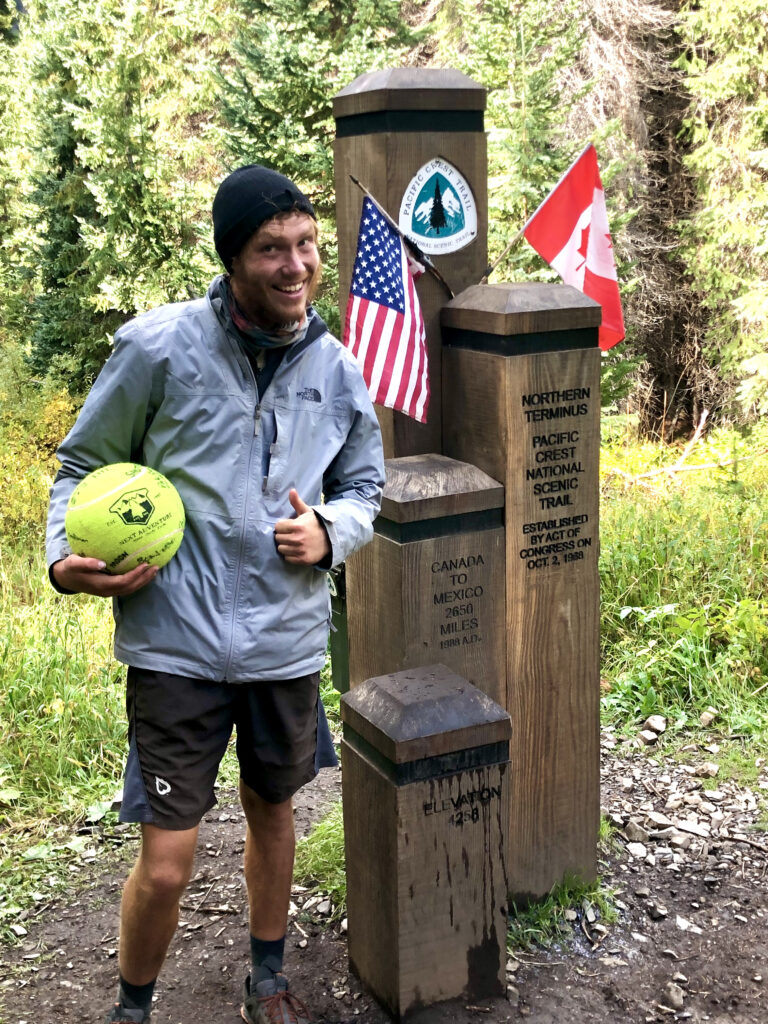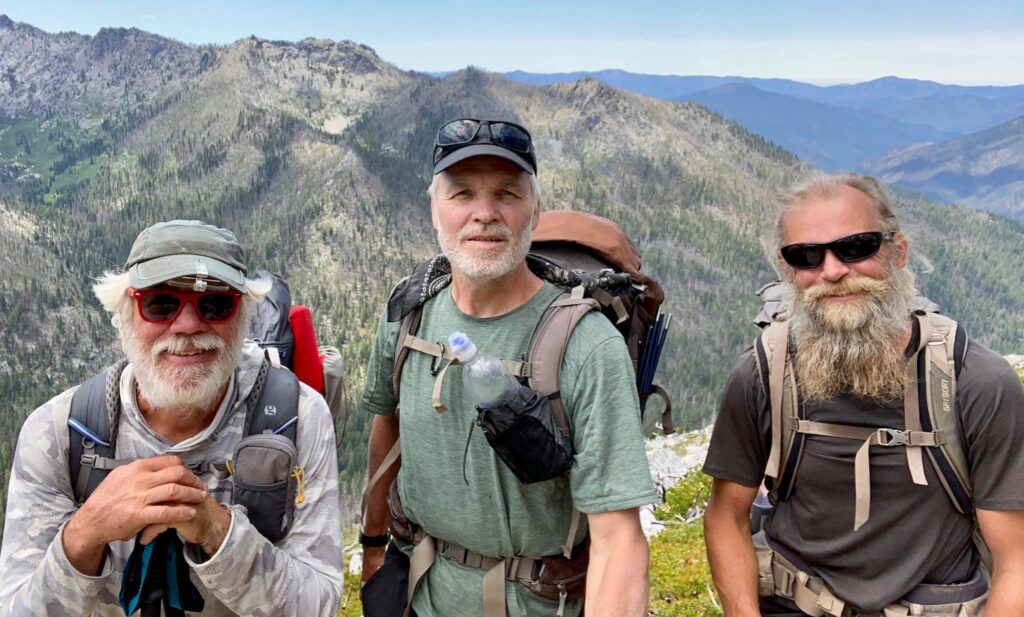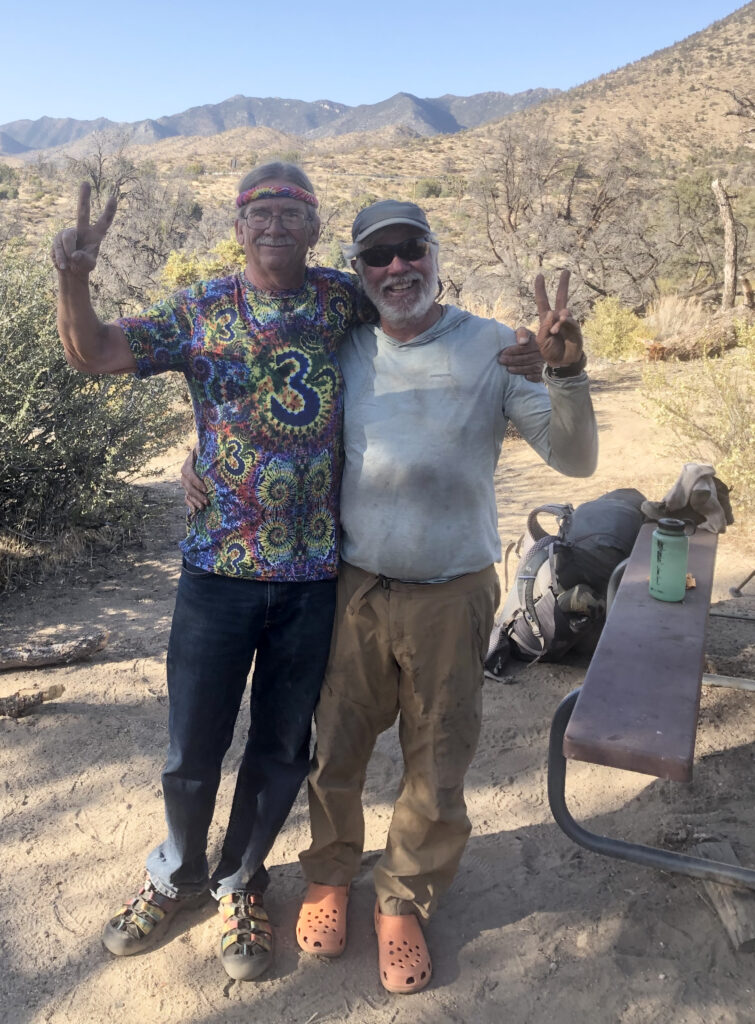
Walking into the Walker Pass Campground after a long day, I thought the pony-tailed guy wearing tie-dye, smoking weed and talking about catching and eating rattlesnakes was just another of the many characters you meet along the trail.
But he turned out to be anything but. His name is Raymond and of course his trail name is Earth Hippie. Bounce, another hiker, and I were too tired to hold up our end of the conversation, so Earth Hippie talked for all three of us. He knew the region quite well because he’d grown up in Ridgecrest and roamed these dry hills as a kid. He pointed out where the Kern River drainage was located and our route to Kennedy Meadows the next day, and talked about the best fishing spots. But his passion is Frisbee Golf. He brought out his discs and tutored us on how to throw each of them for distance and accuracy. He plays every day no matter where he’s located. If there’s not an official course, he creates one from the landscape. He told us the story of when he first tried LSD at 11-years old.
But the conversation turned interesting when he told us his 70’s love story. During high school in Ridgecrest, he and his sweetheart had sworn eternal love to one another. But her parents had no interest in their smart daughter having any kind of relationship with a boy known for being a wild child since birth and who was the town’s leading pot dealer. They went their separate ways. Raymond, Earth Hippie, moved to Colorado where he met another woman and raised seven children. His partner suffered from mental illness, and left him with the kids, and he ended up spending 28 years raising them. When the last one left the nest, Earth Hippie let the universe know that he was ready to find a new partner. This was before Tinder, and so he put the word out through energetic channels, he said, because he has a direct relationship with God and the universe. I rolled my eyes at that.
Six women called him the first week, but none seemed to be a good fit. Finally, via Facebook, he received a message from his old high school sweetheart. She’d just finished up a distinguished career doing super-secret work in the USA and abroad. She still loved Earth Hippie and vice versa. Raymond told her that she had contacted him on the very same date they had fallen in love in high school. She said that couldn’t be true. He proved it by asking her to remember the password for the bank account they had started together in high school which was the date they fell in love. She started crying. Earth Hippie told us that stuff like this has happened to him since birth. They got together and looked for a place to live. They liked Durango, CO…but his sweetie said no because it didn’t have a Frisbee Golf Course, and she knew Earth Hippie would be unhappy without one nearby. They chose another town in Colorado.
We said goodbye to Earth Hippie, set up camp and walked three more days to Kennedy Meadows. I was headed back to Berkeley for Max’s birthday party and some R&R. But getting home was not easy. I spent the night in Ridgecrest and early the next morning was at a bus stop for the 3-hour ride to Bakersfield, followed by a 6 hour train trip. And guess who showed up? Earth Hippie drove up and parked on his way to the Frisbee Golf course across the street from the bus stop. We chatted, and then I checked the bus schedule again because it was late. It turned out I was at the wrong stop, and not only had missed the bus but would miss the train and miss Max’s birthday party. Earth Hippie just said, “Why do you think I’m here, get in the car.” He told me he was told to be at this park today by the Supreme Being, so he showed up not knowing what he was supposed to do but play Frisbee golf. “My hair stands on end when God works through me,” he said. He drove me to Lake Isabella fifty miles away to catch up with the bus. He smoked weed and talked the entire time of course. He said these things happen to him all of the time. He figured out at eight-years old who he was, an eternal soul completely connected to God, the universe and every living thing in it.
When we were approaching Lake Isabella, he said he’d been given another mission to pick up a PCT hiker. Sure enough, when we arrived at the bus station, there was a guy who was ecstatic to get a ride from Raymond, an angel dressed up like a 64-year old hippie.
